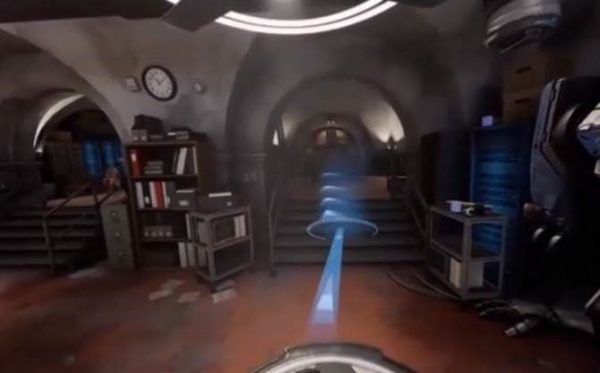Cybersickness:
(funded by National Science Foundation grant 2309990):
Virtual reality can cause discomfort called cybersickness, which is somewhat similar to the experience of motion sickness. In this line of research, we are studying the causes of cybersickness and potential interventions to reduce cybersickness.
- Doty, T. A., Kelly, J. W., Gilbert, S. B., & Dorneich, M. C. (in press). Cybersickness abatement from repeated exposure to VR with reduced discomfort. IEEE Transactions on Visualization and Computer Graphics.
Decision processes in human navigation
(funded by National Science Foundation grant 2217890):
Human navigation can require difficult decisions that require weighing pros and cons of possible choices. For example, the best walking path between downtown buildings may be a short outdoor path when the weather is pleasant or a longer path through indoor passageways during overly hot or cold months. This research investigates how people make these sorts of decisions, deal with conflicting sources of information (e.g., our sense of direction indicates that we should turn left but a familiar landmark indicates that we should turn right), and use navigation aids (e.g., an overhead map of the environment). The investigators will use mathematical models of people’s choices and actions to understand how the human brain stores and uses spatial knowledge for navigation. The results can inform the use of technology, ranging from movement interfaces for video games to GPS-enabled maps.
Virtual reality often allows the user to physically walk to explore the virtual environment. However, virtual environments are typically larger than the physical space available for walking, so the user must use a locomotion interface to fully explore the virtual environment. One common locomotion interface is teleporting, whereby the user points a virtual laser pointer at the intended location and is then transported to that location without any motion cues. However, teleporting comes at a spatial cognitive cost. Our research investigates the pros and cons of locomotion interfaces, such as teleporting, and seeks practical guidelines to mitigate the spatial cognitive costs.
- Cherep, L.A., Lim, A.F., Kelly, J.W., Acharya, D., Velasco, A., Bustamante, E., Ostrander, A., & Gilbert, S.B. (2020). Spatial cognitive implications of teleporting through virtual environments. Journal of Experimental Psychology: Applied, 26(3), 480-492. *2020 Nickerson Award for best paper in the journal

 (funded by National Science Foundation grant
(funded by National Science Foundation grant